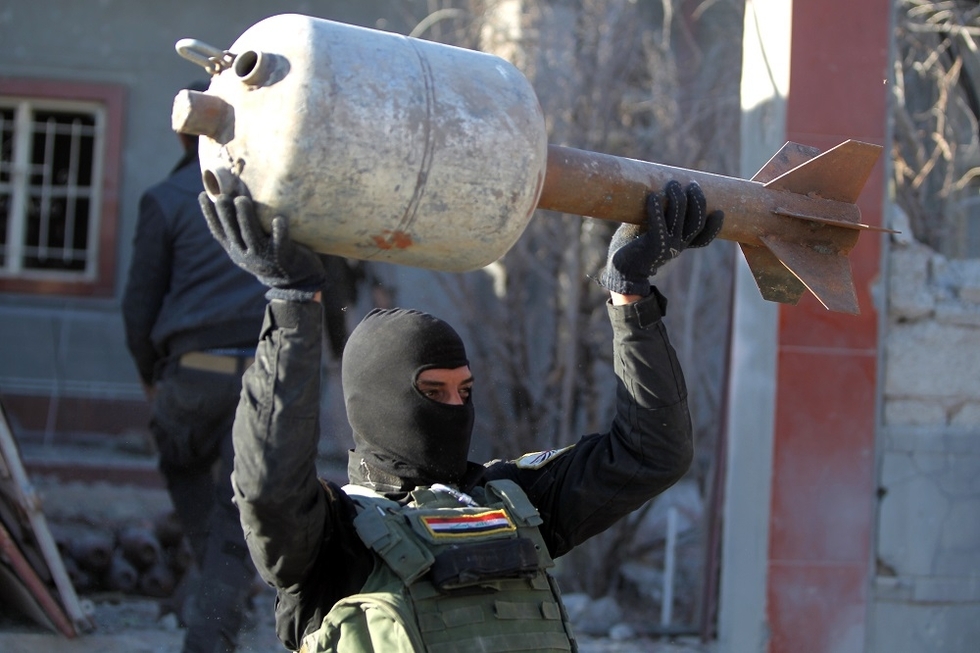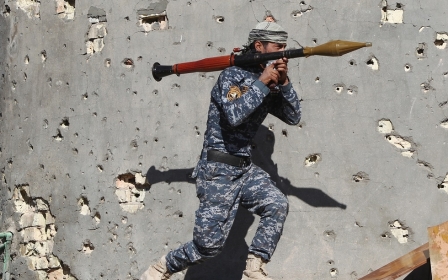Fierce battles expected in Ramadi as Iraqi forces close in on IS

BAGHDAD – Iraqi security forces have made significant progress in Ramadi, the capital of the Sunni Muslim-dominated province of Anbar, but completely capturing the city from Islamic State (IS) militants is still weeks away, Iraqi military officers and local officials told Middle East Eye on Wednesday.
Earlier this week, thousands of Iraqi special combat and army troops launched a military campaign to retake the northern and western parts of Ramadi, which was been held by the fighters of the militant group since May, when the local police and Iraqi army abandoned their weapons and positions inside the city and its suburbs without resistance.
In a televised speech on Tuesday evening, Iraqi Prime Minister Haider al-Abadi announced that the headquarters of Anbar's security operations in northern Ramadi and the strategic town of Taamiam in western Ramadi had been retaken, and he promised to bring back the displaced people of these areas soon.
"It’s a matter of time [before we] liberate Ramadi from the remnants of Daesh [IS], their crimes, and the IEDs which they planted in the houses and streets," Abadi said.
Taamaim is a key town in the province of Ramadi. It consists of eight large neighbourhoods located along the western bank of the Euphrates River. Five small bridges link the western parts of Ramadi, where the Iraqi forces are now positioned, to the eastern parts where the militants, the governmental complex and the headquarters of the local government are located.
By gaining control over Taamaim and the headquarters of Anbar's operation commands, which overlooks the international highway in northern Ramadi, the Iraqi security forces have encircled IS militants in central Ramadi.
"The center of Ramadi is no more than 700-800 meters away from the new positions of the security forces. They (Iraqi forces) have not crossed the river yet, but the militants are now within the range of their fire," Sabah Karhout, the head of Anbar provincial council, told MEE.
"Now we can say that the Iraqi security forces have regained more than 70 percent of Ramadi city and hope to gain the rest soon," Karhout said.
On Wednesday evening, a video circulated by the military showed a group of soldiers including Major General Essmail al-Mahalawi, the commander of Anbar military operations, heading to the entrance of the main building of the Anbar command compound. Intense gunfire could be heard on the video, lasting around 43 seconds.
Another video showed Mahalawi on the roof of the building among his soldiers, some with Iraqi flags draped on their shoulders, while others waved flags and their AK-47s chanting, "The battle calls. Where are the shooters?" Many snipers were also positioned on the roof.
"The areas that we liberated last three days represent the key to (liberating) the centre of the city … the goal was isolating Daesh inside. The terrorists are trapped now at central Ramadi," Major General Sami al-Aaridhi, the head of a special operations unit which is linked to the Iraqi Counter-Terrorism Squad, told MEE by phone from his position in western Ramadi.
"The operation has continued, but we reached a river and this river needs to be bridged and crossed and this will take time," Aaridhi said.
The new progress in Ramadi has been made by the well-equipped special commands of the Iraqi Counter-Terrorism Squad backed by several Iraqi Army units and US-led military coalition air jets. The Shia-dominated Popular Mobilisation Units have been excluded from the battles to liberate Ramadi and other key cities in Anbar due to sectarian sensitivity.
The US, Iraq’s top ally in its war against IS - which was seized almost a third of the country's territories in the north and west since late last year - holds that it should be regular Iraqi security forces and anti-IS Sunni volunteers trained by the US advisors who liberate Anbar, and maintains that the US is playing a supporting role in the operation.
Photos and videos circulated by the Iraqi military media and footage broadcast by the Iraqi state-run satellite channel showed the massive destruction of buildings, houses and bridges in northern and western Ramadi. Bringing displaced families back to their homes in these areas now would be difficult and unavailing, local officials said.
"Big destruction took place in Ramadi and its liberated suburbs because of the trapping [by IS] o the military operations. Also there are still so many trapped buildings and houses so we need time to secure these areas, defuse these traps, clean the city and supply some basic services," Hikmat Suliam, the political advisor of Anbar's governor told the MEE.
"We cannot bring people back (to their homes) now … We need time," Suliam said, adding that there are around 20,000 displaced families from Anbar. These families are living in poor humanitarian conditions in tents, most of them settling west of Baghdad.
"I think we need weeks. Two to three months, at least," Hikmat said.
New MEE newsletter: Jerusalem Dispatch
Sign up to get the latest insights and analysis on Israel-Palestine, alongside Turkey Unpacked and other MEE newsletters
Middle East Eye delivers independent and unrivalled coverage and analysis of the Middle East, North Africa and beyond. To learn more about republishing this content and the associated fees, please fill out this form. More about MEE can be found here.





